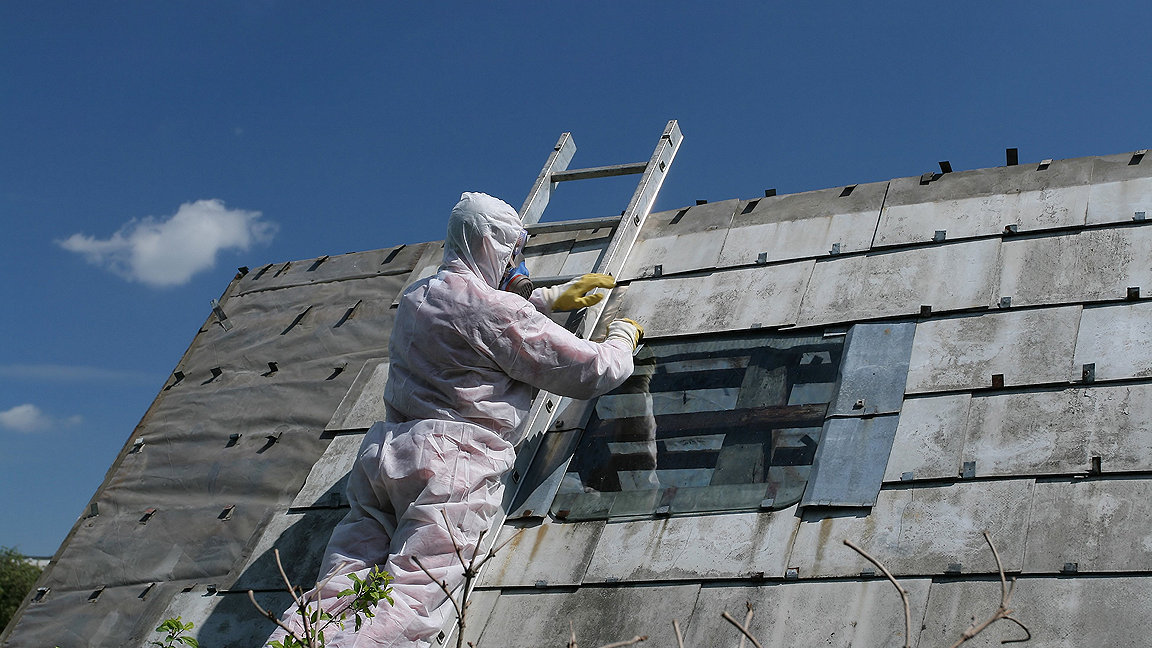
Although all asbestos has been statutorily banned since 1999, recent figures from the Health and Safety Executive (HSE) show that at least 5,000 people a year still die in Great Britain from diseases related to the substance.
As the HSE points out, asbestos-based products were used extensively in construction – including new build, refurbishment and maintenance – from about 1950 until 1999. Asbestos was used less frequently after the mid 1970s and still less into the 1980s, particularly in commercial buildings; however, there is a considerable quantity of asbestos remaining in British building stock.
HSE is therefore reminding those who carry out repairs or refurbishment work in buildings constructed before 2000 that they are at a higher risk of disturbing asbestos. It has developed a dedicated website for its Asbestos and You initiative, designed to raise awareness about the material and its dangers in the workplace and wider community, hosted on the Work Right campaigns site.
Campaign targets younger tradespeople
While the Asbestos and You initiative is aimed at all tradespeople, there is an emphasis on those who started work after 1999 when use of the material was comprehensively banned in Great Britain. The campaign particularly wants to reach those who started their careers in 2000 or later so they know that the risk remains.
The use of chrysotile – white asbestos – was outlawed in Great Britain in 1999, marking the last form of asbestos to be banned. HSE is concerned that younger workers such as plasterers and joiners whose careers started after this date may think asbestos-related diseases affect only older people who were working before the ban came into effect.
The reason that it tends to be older people who become ill is that such diseases have a long latency period; that is, they take many years following exposure to show symptoms. By the time that they do, the conditions have usually reached a late stage of development.
So all those who work on buildings originally constructed in 1999 or earlier, whether old or young, could be exposed to asbestos. Younger people need to be aware so they can learn what to avoid to prevent the development of disease in later life, when there is generally little that can be done to treat it.
HSE's chief executive Sarah Albon says: 'Asbestos exposure in Great Britain is still the single greatest cause of work-related deaths. We are committed to protecting people in the workplace and reducing future work-related ill health.
'Everyone working in construction today, of any age, must take the risk from asbestos seriously. Asbestos is dangerous when not maintained in a safe condition or if physically disturbed without the right measures in place to avoid fibres being released into the air.'
Asbestosis and cancers among related diseases
Diseases caused by asbestos include asbestosis, a scarring of the lungs that results from exposure to high concentrations of airborne fibres. As the manufacturing processes that gave rise to these ceased more than 20 years ago in the UK, asbestosis is now less prevalent than it used to be.
However, asbestos-related lung cancers and mesothelioma are more common. The latter is an incurable cancer that mainly affects the lining of the lungs – pleural mesothelioma. However, it can also affect the lining of the stomach – peritoneal mesothelioma – as well as the heart or testicles.
Asbestos can also cause less serious conditions, such as pleural plaques and diffuse pleural thickening, although the latter is not always a sign of asbestos exposure as it can also be caused by infection, inflammation or fluid around the lungs.
Pleural plaques and diffuse pleural thickening, as their names suggest, also affect the lung linings. The former is thought to be harmless and does not prefigure the development of cancer; the latter usually causes only mild symptoms of breathlessness, although it can be more serious.
The significant diseases remain cancers and, to a lesser extent, asbestosis, so there is no room for complacency. The HSE's statistics indicate a significant increase in mesothelioma deaths in recent decades; however, the figure has levelled out in the past few years, with 2,544 recorded in 2020 being the most recently published total, and a similar number of lung cancer deaths.
Threat persists in existing buildings
However, exposure is still caused by asbestos that remains in buildings – either when it is disturbed as other works are carried out without appropriate safety measures, or simply because of damage resulting from poor management.
A national data research report published by the Asbestos Testing and Consultancy Association and the National Organisation of Asbestos Consultants in November drew attention to the fact that a high percentage of asbestos in UK buildings that were constructed before 2000 is damaged. This underlines even more urgently the need for younger tradespeople to have greater understanding of the material.
But if asbestos management is to be improved, awareness needs to be raised and knowledge enhanced among those who are directly responsible for managing buildings, as well as those who physically work on them.
Building owners and property professionals have a statutory duty under The Control of Asbestos Regulations 2012 to manage the material. Likewise, construction professionals have a statutory duty under several pieces of legislation to prevent uncontrolled asbestos release on their projects.
But there are ethical obligations as well as statutory ones. Everyone must take note, everyone must learn – and everyone must act.
'Exposure is still caused by asbestos that remains in buildings – either when it is disturbed or simply because of damage resulting from poor management'
Jeffrey Tribich is the founder of Jeffrey Tribich Consulting and a member of the RICS Asbestos Working Group
Contact Jeffrey: Email
Related competencies include: Construction technology and environmental services, Health and safety, Inspection, Legal/regulatory compliance

